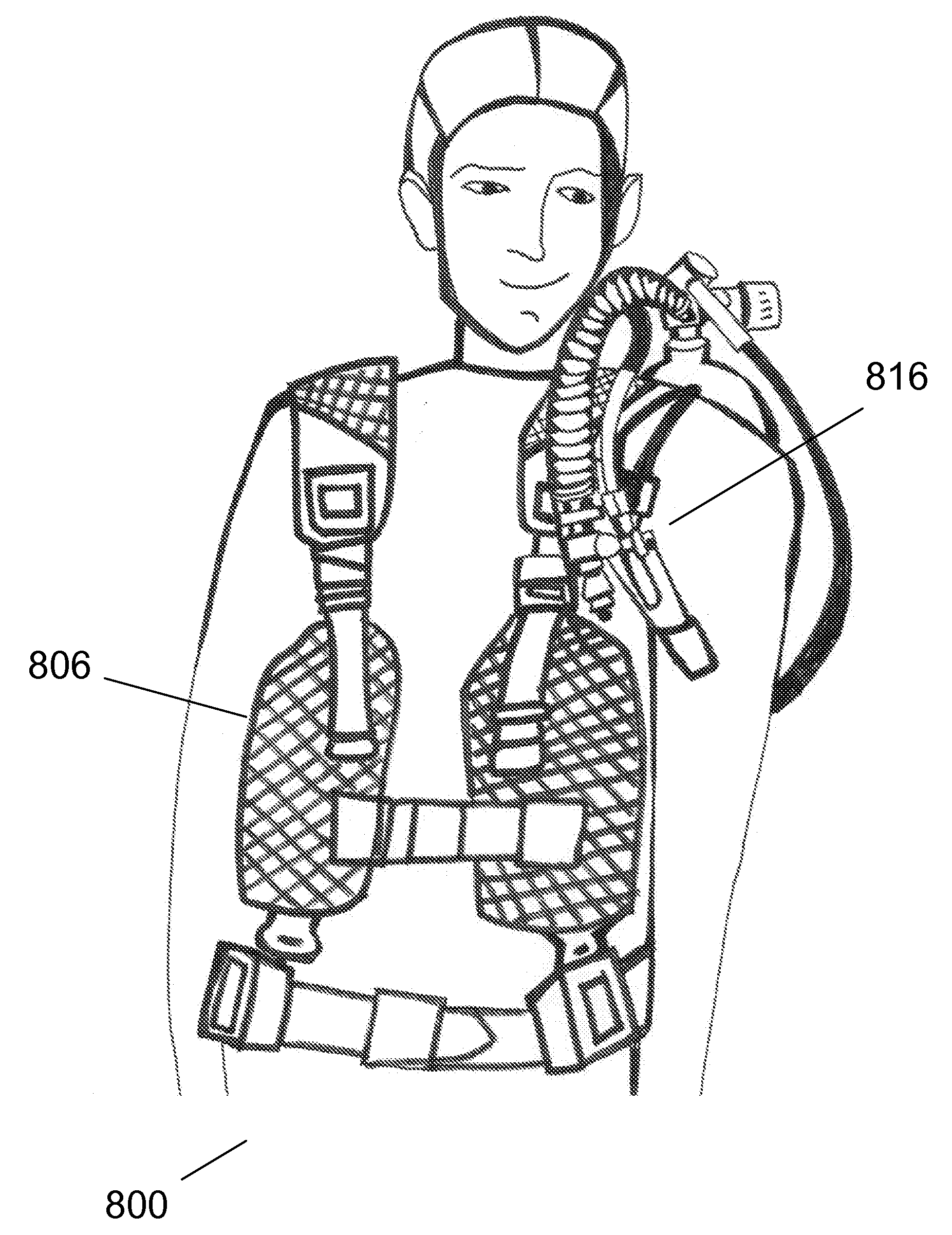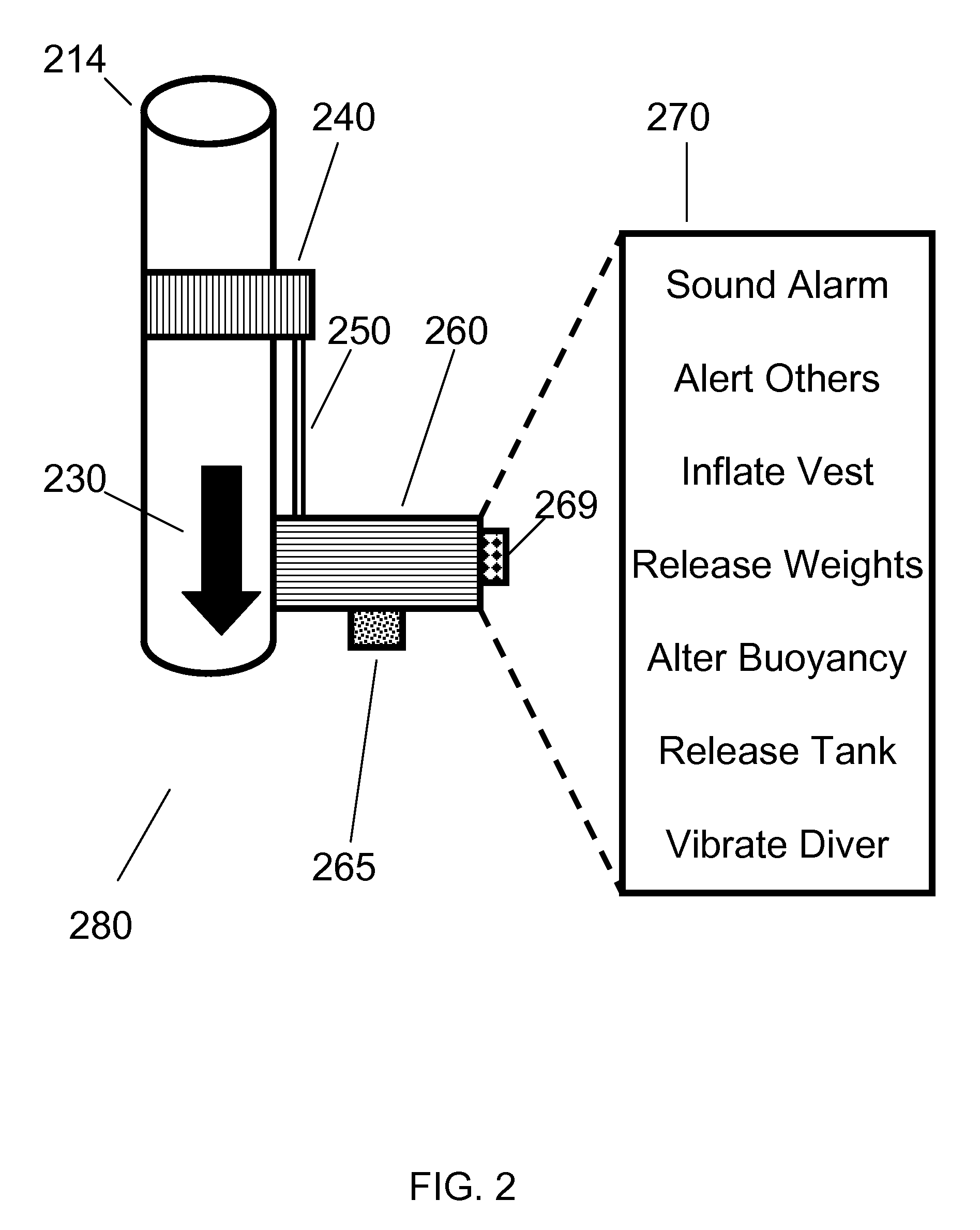Methods and devices for rescuing a distressed diver
a technology for distressed divers and rescuers, applied in underwater equipment, instruments, life-boats, etc., can solve the problems of inherently dangerous diving and potential fatalities of air tank failures
- Summary
- Abstract
- Description
- Claims
- Application Information
AI Technical Summary
Benefits of technology
Problems solved by technology
Method used
Image
Examples
first embodiment
[0050]Referring now to FIG. 2, a diving hose 214 allows for unidirectional flow 230 of oxygen or air from a tank (not shown) to a diver's mouth piece or to an inflator (not shown). A gas pressure sensor 240 measures the pressure associated with said flow 230 at all times during diving. The gas pressure sensor 240 is generally in contact with the flow 230 of gas either directly or indirectly. As shown, the gas pressure sensor 240 sits partially in the diving hose 214. Alternatively, some piping (not shown) can allow for gas to reach the gas pressure sensor 240 without the latter being in the direct flow 230 of gas to a diver. The gas pressure sensor 240 is in electrical connection 250 with a controller unit 260. The controller unit monitors gas pressure changes during a dive. The controller unit 260 is preprogrammed with gas pressure behavior either in general or for a particular diver. The controller unit 260 continually monitors data from the gas pressure sensor 240 and compares sa...
second embodiment
[0051]Attention is turned to FIG. 3, wherein is shown diving gas tank 302 with a diver rescue element 380 that includes both a gas pressure monitor as well as a controller element (not shown separately in this example). The diver rescue element 380 is contacted to the high-pressure regulator 303 attached to the tank 302. Though the regulator measures the high pressure gas leaving the tank, the diver rescue element 380 may be placed in contact with high pressure gas flow and still function properly.
third embodiment
[0052]Attention is turned to FIG. 4, which shows an alternative embodiment of the present invention. A diver rescue element 480 is placed along a hose 414 that has medium pressure gas coming from a tank 402 and is delivered to a diver's inflator 416. The diver rescue element 480 is connected 490 to the inflator hose 405 as shown. Should diver (not shown) stop breathing, as determined by anomalous breathing behavior, and should diver not respond to vibrations, sound or other local stimuli, the diver rescue element 480 can transfer air from the hose 414 to the inflator tube 404 in order to initiate ascent of the distressed diver.
[0053]A critical feature to note in the present invention is that all steps are performed automatically. The diver rescue element 480 monitors gas pressure from the tank to the driver without any required interference of the diver. Should there be a problem such as no breathing or inconsistent gas pressure, the diver rescue element 480 will first alert the div...
PUM
 Login to View More
Login to View More Abstract
Description
Claims
Application Information
 Login to View More
Login to View More - R&D
- Intellectual Property
- Life Sciences
- Materials
- Tech Scout
- Unparalleled Data Quality
- Higher Quality Content
- 60% Fewer Hallucinations
Browse by: Latest US Patents, China's latest patents, Technical Efficacy Thesaurus, Application Domain, Technology Topic, Popular Technical Reports.
© 2025 PatSnap. All rights reserved.Legal|Privacy policy|Modern Slavery Act Transparency Statement|Sitemap|About US| Contact US: help@patsnap.com



